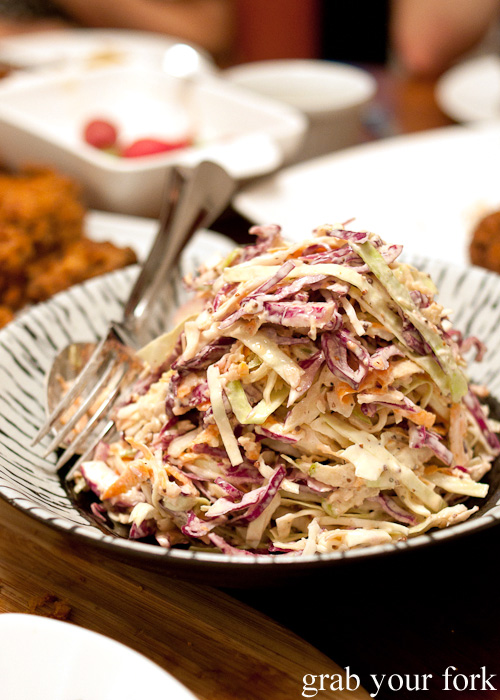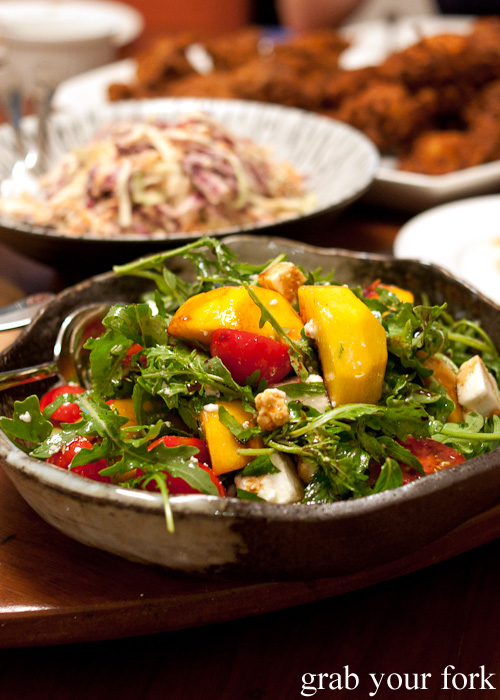Adventures in Galician seafood: Percebes goosefoot barnacles in A Coruña, Spain
If you love seafood, and you love Spain, add Galicia to your bucket list. Its coastal location on the north west tip of Spain yields a gorge-fest of prawns, langoustines, razor clams, crabs, octopus, fish and one of the strangest creatures you're ever likely to encounter: the goose barnacle.
After a whirlwind weekend in Barcelona, I hopped on a cheap flight to A Coruña, a trip that only takes about 100 minutes. A Coruña is the second largest city in Galicia, Spain with a modest population of 250,000. I had accommodation for two days and I was keen to eat as much as possible.
Plaza de Lugo Fish Market
First port of call is the Plaza de Lugo Fish Market. They've been trading here since 1910 and even though fancy offices and retail stores have sprung up around it, locals still come here to pick up their fish for dinner.
Langoustines
The market is like a much bigger version of the seafood section in Sydney's Paddy's Markets in Chinatown. It's tiled, sparkling clean and filled with over two dozen vendors all selling the freshest seafood you could imagine. 40,000 tonnes of fish go through this market every year.
Fish on scales
Fishmonger with shopper
Stingrays
Crabs
Scary sharp-toothed fish
Shopper at the fish market
Zamburinas or variegated scallops
Zamburinas are a small type of scallop found in the North Sea, English Channel, Atlantic Ocean and Red Sea. The shell is usually no bigger than 6cm in length. It's also known as a variegated scallop.
Langoustines
Percebes also known as goose barnacles or goose foot barnacles
Percebes were definitely on my list of things to eat. Sometimes known as goose barnacles, these filter-feeding crustaceans are harvested along much of the Galician coast.
Rabbits and corn fed chicken
Upstairs are more stalls: a mix of butchers, bakers, fruiterers and delicatessens. There's no fancy signage or packaging - freshness and quality are the only things that matter.
Jamon iberico €50 (AU$75) per kilo
Hello jamon... the price of Iberico jamon was enough to make me weep with joy. In Australia, Iberico will set you back about $300 per kilo but in Spain you can get it for about $75 a kilo.
Jamon iberico
Helloooooo snack time.
Breads at Panderia Laurita
Galician empanada at Panderia Laurita
with scallops, sardines, cockles and octopus
The Galician empanada is worth hunting down. A specialty of the region, it's made into a giant pie that's carved up and served by the slice.
Inside the Galician empanada
It's heavy in weight and today's version is packed with a mix of scallops, sardines, cockles and octopus. Plump raisins add sweetness and the pastry is rich and buttery. This wedge easily fuelled me until dinner.
O Paladar
Outdoor dining tables at O Paladar
The town centre of A Coruña is a maze of narrow streets and alleyways you could happily wander around without getting too lost. My favourite street was Calle la Franca, closed to traffic and lined with a myriad of tapas bars and restaurants.
Estrella
I deliberately picked O Paladar because it had such a simple frontage. The whiteboard menu was handwritten with textas and there were no cheesy "We speak English" signs in the window. Of course this meant that ordering required a little bit of Spanglish combined with miming, but hey presto! Cerveza!
Parrillada de marrisco y pulpo €39.90 (about AU$60)
Grilled shellfish and octopus platter
So the seafood platter is usually designed for two, but hey, how often do you find yourself in Galicia? Other tables had nothing but smiles when the giant platter arrived on my table. I'd gone for the big kahuna, a seafood plunder that included:
- Centolla o buey - ox crab
- Pulpo - octopus
- Cigalas - langoustine
- Langostinos - prawns
- Gambas - prawns
- Navajas - razor clams
- Percebes - goose barnacles
- Almejas - clams
- Berberchos - cockles
- Mejillones - mussels
- Minchas (bigaros) - periwinkles
- Calamares - calamari
- Chipirones - baby squid
and all this for about AU$60.
Langoustines, razor clams, mussels and prawns
Beer in one hand, seafood in the other, I went to town on this bonanza. The langoustines were sweet but the prawns were even better, and the razor clams had been just cooked so they were still beautifully tender.
Octopus and crab
The octopus was a soft as a baby's cheek and I eagerly scooped up the crab mustard from its helmet.
Percebes also known as goose barnacles, goosefoot barnacles or gooseneck barnacles
There was squid and mussels and cockles and clams but the main reason I'd ordered this platter is for its inclusion of percebes.
Close-up on the percebes
Let's agree on one thing. Percebes look decidedly freaky. They look more like a dragon's claw, strange nails at the end of a rubbery neck that's strong yet bendy.
After a few perplexed attempts, my laughing waiter came over to show me the best way to peel them. I ended up peeling them open at the claw end, squeezing the neck section so the meat inside slid on down and through the gap at the bottom.
Percebes with and without its shell
Their taste is hard to describe. They're soft and briny but not as minerally as oysters or mussels. They taste a bit like a sweet octopus with a texture that's halfway between crab and a clam.
And the reason for their strange appearance makes much more sense when you look at where they grow. They're only found on rock faces with heavy surf, and harvesting them is more like a death-defying sport involving safety ropes and extreme nimbleness to race down the rocks in between each set of crashing waves. Watching the video below gave me a renewed appreciation of this delicacy, and also goes a long way to explaining why they cost so much. Percebes can sometimes cost as much as €200 / AU$300 per kilo.
The dangers of harvesting percebes - Human Planet episode one: Oceans - Into the Blue
View on YouTube
Cerveceria El Real
Inside Cerveceria El Real
Dining alone isn't half as intimidating in Spain. It's all too easy to slip into a tapas bar unnoticed, pull up a stool at the counter, order a couple of snacks and then stay for as little or as long as you please.
I stop into Cerveceria El Real on my final evening, a tavern with sit-down tables along the left and casual diners propped up at the bar. Live soccer on the television is a given.
Zamburiñas €12 (AU$18.15) and Estrella Galicia €1.80 (AU$2.70)
Estrella Galicia is the local brew around here, a pale lager founded in 1906 and still completely family-owned.
Zamburiñas
It goes down a treat with a plate of local zamburiñas, a small type of scallop. They're cooked simply: flashed until the grill with a bit of garlic butter and finished with parsley, and pack plenty of punch despite their size.
Calamares or fried calamari €1.20 (AU$1.80)
I took a cue from the gentleman next to me and ordered the fried calamari. These were amazing: flash fried with the lightest dusting of flour, and the calamari was so fresh it was incredibly tender. Beer and fried calamari must be one of the world's greatest combo's.
Tarta de Santiago or Cake of St James
While you're in Galicia. it's mandatory to have a slice of Tarta de Santiago too. I picked up a wedge from a local patisserie and revelled in this almond meal cake made zingy with lemon.
There was plenty more to see around A Coruña. It's a pretty town with impressive architecture, especially the glass-fronted buildings along the harbour front. I was sad to leave but next stop would be Galicia's capital, Santiago de Compostela.
Glass fronted balconies, or galerias
Galician octopus
Jamon ceiling in a tapas bar
Iglesia de San Jorge or the Church of St George built in the eighteenth century
Palacio Municipal, the city hall
Maria Pita Square
Maria Pita statue
The grand elegance of Maria Pita Square
Bronzed sun worshippers at Orzan Beach
Steep streets of A Coruña
La Franja street in A Coruña
<< Read the first Spain post: Where to eat in Barcelona, Spain
>> Read the next Spain post: Galician octopus in Santiago de Compostela
El Real Cerveceria
Olmos, 8, 15003 A Coruña, Spain
Tel: +34 981 213 666
Opening hours:
Tuesday to Sunday 11am-1am
O Paladar
Calle la Franca, 34, 15001, A Coruña, Spain
Tel: +34 981 202 574
Opening hours:
Tuesday to Sunday 11am-4pm and 8pm-11.30pm
Plaza de Lugo Fish Market
Plaza Lugo, 15004, A Coruña, Spain
Tel: +34 981 184 200
Opening hours:
7 days 9am-3pm and 4.30pm-8pm
Related Grab Your Fork posts:
Spain - A Coruna: goosefoot barnacles and Galician seafood adventures
Spain - Santiago de Compostela: Galician octopus and tetilla cheese
Bulgaria - Dairy farms and yoghurt factories across Sofia and Plovdiv
Malaysia - Food tour with Australian Masterchef winner Adam Liaw
Philippines - Ice cream with cheese, turtle stew and sizzling pigs head
Singapore - Marina Bay Sands to hawker markets in 140 photos
USA - The great donut, fried chicken and bbq tour
posted by Helen (Grab Your Fork) on 2/23/2014 12:26:00 am








